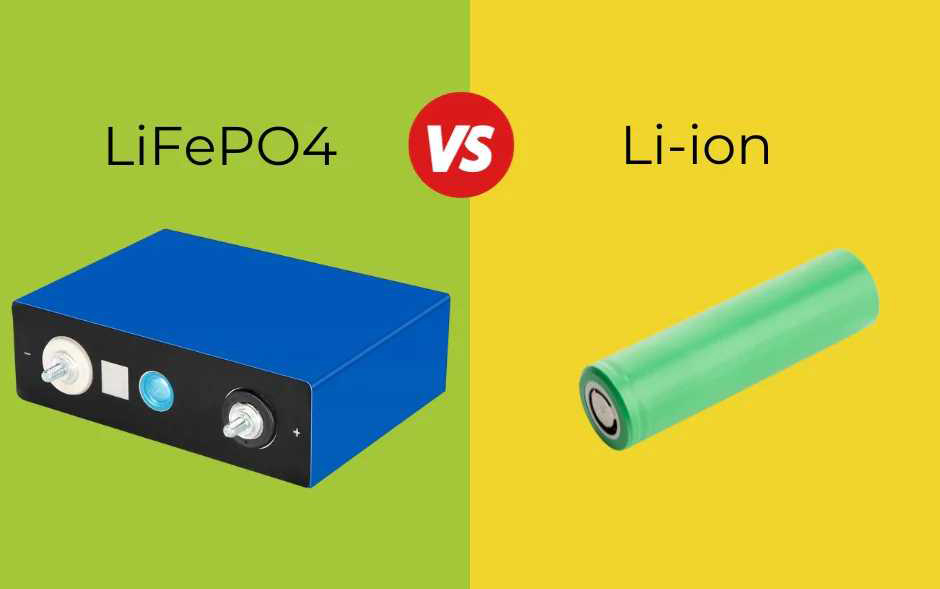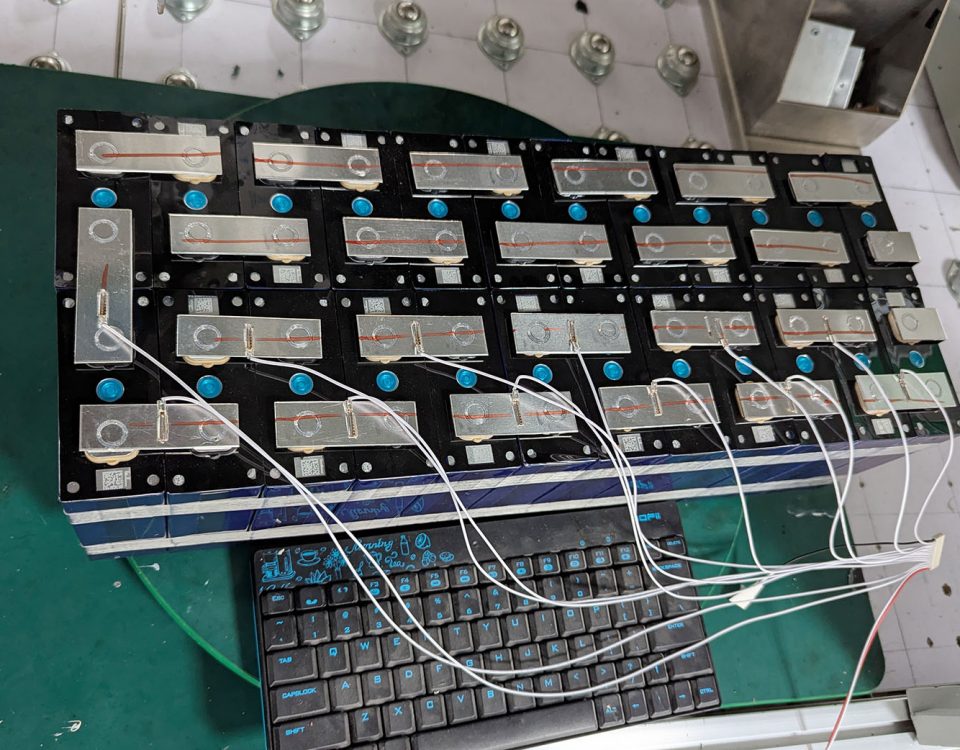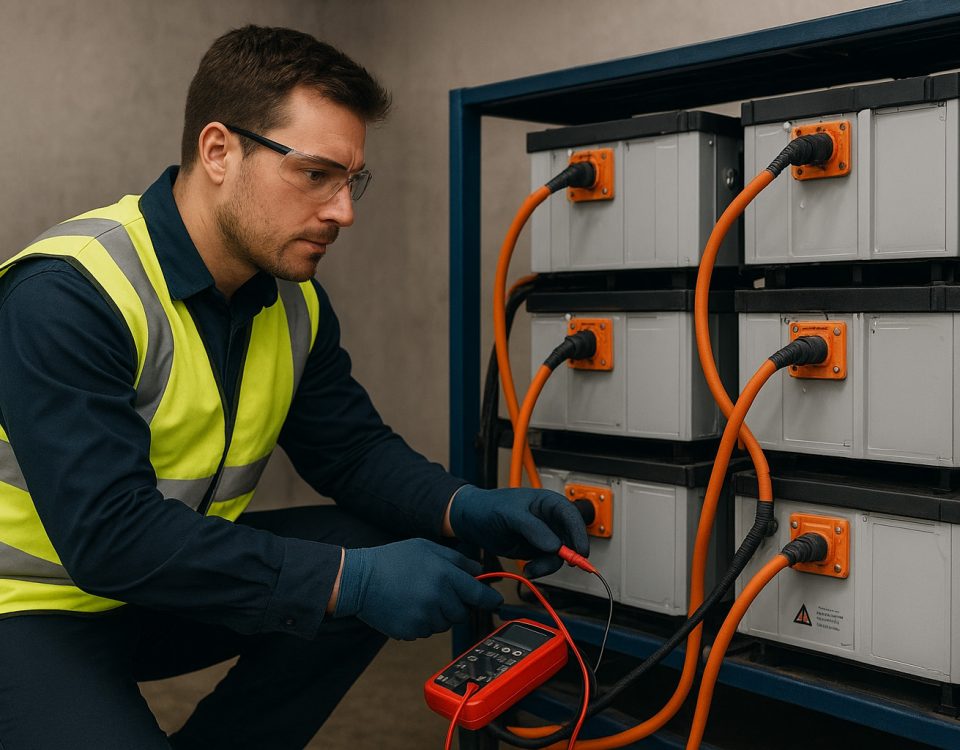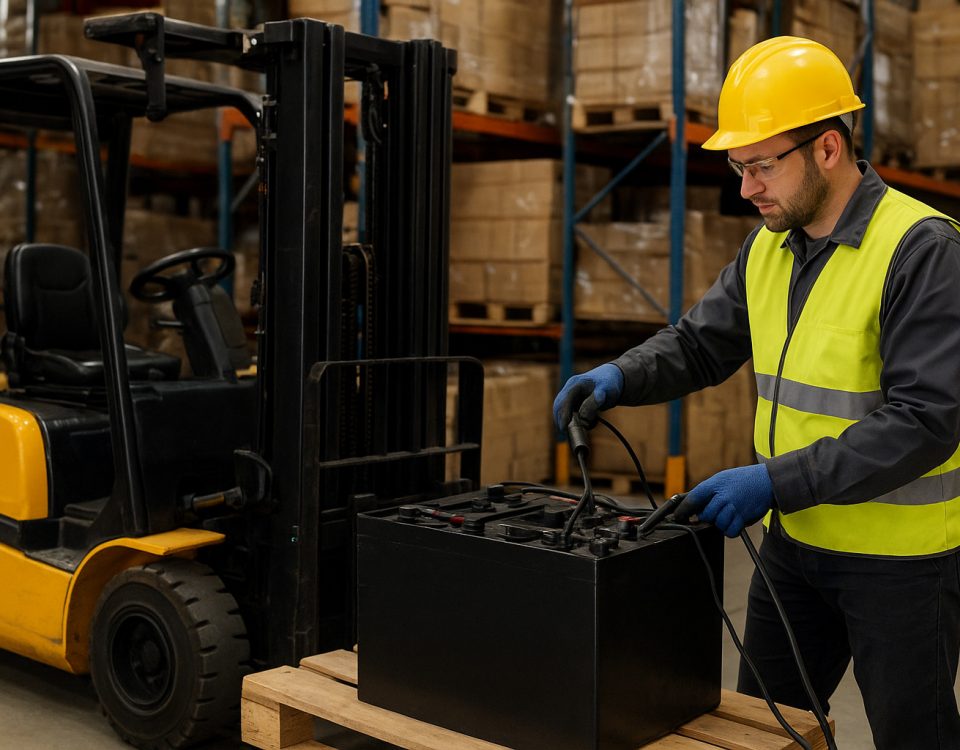Trong những năm gần đây, pin lithium iron phosphate (LiFePO4 hoặc LFP) đã thu hút sự quan tâm đáng kể, đặc biệt trong các phương tiện điện (EV), hệ thống lưu trữ năng lượng và các ứng dụng khác. Được biết đến với các tính năng an toàn ấn tượng, hiệu quả về chi phí và hiệu suất hợp lý, Pin LFP Cung cấp một giải pháp thay thế hấp dẫn so với các loại pin lithium-ion (Li-ion) và lithium nickel manganese cobalt (NMC) được sử dụng phổ biến hơn. Nhưng điều gì làm cho LFP khác biệt so với các loại pin lithium khác? Hiệu suất của nó như thế nào trong các khía cạnh như phạm vi hoạt động, công suất, chi phí và an toàn? Trong bài viết này, chúng ta sẽ tìm hiểu những điểm khác biệt chính giữa LFP và các loại pin lithium khác, và tại sao LFP có thể là tương lai của lưu trữ năng lượng xanh và giao thông điện.
Lithium Iron Phosphate (LFP) là gì?
Trước khi đi vào so sánh, điều quan trọng là phải hiểu LFP là gì và tại sao chúng đang trở thành lựa chọn phổ biến. LFP là loại pin lithium sử dụng phosphate sắt lithium làm vật liệu cực dương, khác với pin lithium-ion truyền thống thường sử dụng các vật liệu như coban hoặc niken. Các ưu điểm chính của pin LFP bao gồm tuổi thọ cao, độ ổn định và tác động môi trường thấp, vì chúng không yêu cầu các vật liệu hiếm hoặc độc hại.
So sánh phạm vi: LFP so với Lithium-ion (Li-ion) và NMC
Một trong những yếu tố quan trọng nhất đối với người tiêu dùng khi xem xét các phương tiện chạy bằng pin hoặc hệ thống lưu trữ năng lượng là phạm vi Một pin cung cấp. Đây là nơi pin LFP và các loại pin lithium khác có thể khác biệt đáng kể.
Pin Li-ion và NMC, sử dụng niken và coban trong cực dương, thường có mật độ năng lượng cao hơn so với pin LFP. Điều này đồng nghĩa với việc có phạm vi hoạt động xa hơn, đặc biệt là trong xe điện (EV). Ví dụ, mật độ năng lượng trung bình của pin NMC khoảng 200 Wh/kg, trong khi pin LFP thường dao động từ 120-160 Wh/kg.
Tuy nhiên, mật độ năng lượng thấp hơn của pin LFP không nhất thiết làm cho chúng kém hấp dẫn hơn. Mặc dù LFP có thể không cung cấp cùng phạm vi di chuyển trên mỗi lần sạc như NMC, nhưng chúng phạm vi Thường thì dung lượng này đã đủ cho việc lái xe trong thành phố, các chuyến đi ngắn và hệ thống lưu trữ năng lượng tĩnh. Ngoài ra, mật độ năng lượng của pin LFP đang được cải thiện, và với các nghiên cứu và phát triển liên tục, các loại pin này đang dần thu hẹp khoảng cách về phạm vi hoạt động.
Trong bối cảnh xe điện (EV), một số nhà sản xuất đã bắt đầu áp dụng pin LFP cho các mẫu xe có giá thành hợp lý hơn, nơi phạm vi di chuyển thấp hơn một chút không ảnh hưởng đến nhu cầu của khách hàng. Ví dụ, mẫu xe Model 3 tiêu chuẩn của Tesla sử dụng pin LFP, cung cấp phạm vi di chuyển thực tế cho việc lái xe hàng ngày.
Công suất và Hiệu suất: Một cách tiếp cận cân bằng
Khi nói đến quyền lực Và hiệu suất, Pin LFP cũng có những ưu điểm và nhược điểm riêng biệt so với các loại pin lithium-ion và NMC.
Pin Li-ion và NMC thường được sử dụng trong các phương tiện và ứng dụng đòi hỏi khả năng giải phóng năng lượng nhanh chóng nhờ vào công suất đầu ra vượt trội của chúng. Điều này khiến chúng trở thành lựa chọn lý tưởng cho xe điện thể thao, thiết bị điện tử tiêu dùng cao cấp và các hệ thống yêu cầu cả phạm vi hoạt động dài và công suất đầu ra cao trong các khoảng thời gian ngắn.
Ngược lại, Pin LFPMặc dù có công suất xả tức thời thấp hơn một chút, nhưng chúng cung cấp một công suất rất Đầu ra công suất ổn định và nhất quánĐặc điểm này đặc biệt hữu ích trong các ứng dụng yêu cầu nguồn năng lượng ổn định trong thời gian dài. LFP là lựa chọn lý tưởng cho các ứng dụng như lưu trữ năng lượng tĩnh và xe buýt điện, nơi các đợt tăng công suất đột ngột và mạnh mẽ không quan trọng bằng khả năng cung cấp nguồn năng lượng ổn định và đáng tin cậy.
Ngoài ra, độ ổn định nhiệt của pin LFP cũng đáng chú ý. Loại pin này có khả năng chịu đựng tốt hơn trước sự biến đổi nhiệt độ, giúp chúng an toàn và đáng tin cậy hơn trong các điều kiện môi trường khác nhau so với pin NMC, vốn nhạy cảm hơn với nhiệt độ cực đoan và áp lực cao.
Chi phí: Lợi thế cạnh tranh của pin LFP
Một trong những lợi thế quan trọng nhất của Pin LFP là của họ hiệu quả chi phíMặc dù chi phí sản xuất ban đầu cho bất kỳ loại pin lithium nào có thể cao, pin LFP thường có giá thành rẻ hơn nhiều so với pin NMC và các loại pin lithium-ion khác.
Điều này chủ yếu là do chi phí nguyên liệu thô sử dụng trong pin LFP thấp hơn. Khác với pin NMC, vốn phụ thuộc vào các nguyên liệu đắt tiền như coban, niken và mangan, pin LFP sử dụng các nguyên liệu dồi dào và rẻ tiền như sắt và photphat. Việc giảm chi phí nguyên liệu dẫn đến sự giảm đáng kể chi phí sản xuất tổng thể, từ đó giúp giảm giá thành cho người tiêu dùng cuối cùng.
Do đó, pin LFP đang trở thành lựa chọn phổ biến cho Các ứng dụng tiết kiệm chi phí Như xe buýt điện, xe điện giá rẻ và hệ thống lưu trữ năng lượng. Chi phí ban đầu thấp khiến pin LFP trở thành lựa chọn tuyệt vời cho việc áp dụng rộng rãi, đặc biệt là ở những thị trường nơi tính khả thi về mặt tài chính là yếu tố quan trọng.
Hơn nữa, chi phí thấp hơn của pin LFP đang góp phần thúc đẩy việc áp dụng công nghệ xanhTrong các ứng dụng như lưu trữ năng lượng tái tạo, nơi hiệu quả chi phí là yếu tố quan trọng, LFP cung cấp một giải pháp tiết kiệm chi phí hơn cho cả doanh nghiệp và người tiêu dùng đang muốn chuyển sang các hệ thống năng lượng sạch hơn.
An toàn: Ưu điểm vượt trội của LFP
An toàn thường được coi là một trong những yếu tố quan trọng nhất khi đánh giá bất kỳ công nghệ pin nào, đặc biệt là trong các ứng dụng có năng lượng cao như xe điện và lưu trữ năng lượng tĩnh. Về mặt an toàn, pin LFP có viền rõ nét so với các loại pin lithium khác.
Pin lithium-ion và pin NMC, mặc dù generally an toàn, đã được biết đến là có thể gặp phải Sự mất kiểm soát nhiệt hoặc quá nhiệt Trong những trường hợp cực đoan, có thể dẫn đến cháy nổ. Điều này chủ yếu là do các vật liệu phản ứng mạnh như coban và niken trong cực âm, có thể trở nên không ổn định dưới một số điều kiện nhất định.
Ngược lại, pin LFP ít có khả năng xảy ra hiện tượng quá nhiệt hơn. Hóa học dựa trên sắt được sử dụng trong pin LFP ổn định hơn nhiều ở nhiệt độ cao, giảm nguy cơ cháy nổ. Điều này khiến pin LFP đặc biệt phù hợp cho các ứng dụng yêu cầu an toàn hàng đầu, như xe buýt điện, lưu trữ năng lượng mặt trời và hệ thống năng lượng gia đình.
Ngoài ra, pin LFP là chống lại sự phân hủy tốt hơn Theo thời gian, pin LFP tiếp tục cải thiện độ an toàn và độ tin cậy tổng thể trong suốt vòng đời của chúng. Sự ổn định và độ bền này có nghĩa là pin LFP ít có khả năng gặp phải các sự cố nguy hiểm hoặc cần thay thế tốn kém.
Tương lai của LFP: Nhu cầu ngày càng tăng về nguồn điện đáng tin cậy và giá cả phải chăng
Khi nhu cầu về xe điện, năng lượng tái tạo và hệ thống lưu trữ năng lượng quy mô lớn tiếp tục gia tăng, Pin LFP đang ở vị trí thuận lợi để đóng vai trò quan trọng trong quá trình chuyển đổi năng lượng sạch. Mặc dù pin LFP hiện tại có thể chưa sánh ngang với pin NMC về công suất hoặc phạm vi hoạt động, nhưng chúng khả năng chi trả, an toàn, Và bền vững làm cho chúng trở thành một lựa chọn hấp dẫn cho nhiều ứng dụng.
Với sự phổ biến ngày càng tăng và sự phát triển của công nghệ, chúng ta có thể kỳ vọng pin LFP sẽ tiếp tục cải thiện về hiệu suất và mật độ năng lượng, thu hẹp khoảng cách với các lựa chọn đắt tiền hơn. Các công ty như... RICHYE, một nhà sản xuất pin lithium hàng đầu, đã tiên phong trong việc phát triển các giải pháp pin LFP chất lượng cao, mang lại độ tin cậy, hiệu suất và tính kinh tế cho nhiều ngành công nghiệp khác nhau.
Giới thiệu về RICHYE: Nhà sản xuất pin Lithium đáng tin cậy
RICHYE là nhà sản xuất pin lithium chuyên nghiệp, chuyên sản xuất pin lithium chất lượng cao cho nhiều ứng dụng khác nhau. Các pin LFP của họ nổi tiếng với hiệu suất vượt trội, độ bền cao và hiệu quả về chi phí. Với cam kết về đổi mới và bền vững, RICHYE đảm bảo rằng các sản phẩm của họ đáp ứng các tiêu chuẩn an toàn và chất lượng cao nhất, giúp họ trở thành đối tác đáng tin cậy cho khách hàng trên toàn thế giới.
Dù bạn đang tìm kiếm pin cho xe điện, hệ thống lưu trữ năng lượng hay các ứng dụng công nghiệp, RICHYE Cung cấp các giải pháp được thiết kế riêng biệt vượt xa mong đợi, kết hợp công nghệ tiên tiến nhất với dịch vụ hỗ trợ khách hàng không đâu sánh bằng.
Tóm lại, pin LFP mang lại một giải pháp đầy hứa hẹn cho nhiều nhu cầu năng lượng hiện đại, cung cấp sự kết hợp cân bằng giữa khả năng chi trả, an toàn, Và bền vữngKhi thị trường toàn cầu tiếp tục chuyển hướng sang các nguồn năng lượng sạch hơn, LFP được dự đoán sẽ trở thành nền tảng quan trọng của ngành công nghiệp pin. Với những cải tiến liên tục về công nghệ và sự mở rộng ứng dụng, rõ ràng pin LFP sẽ đóng vai trò quan trọng trong việc cung cấp năng lượng cho tương lai.




